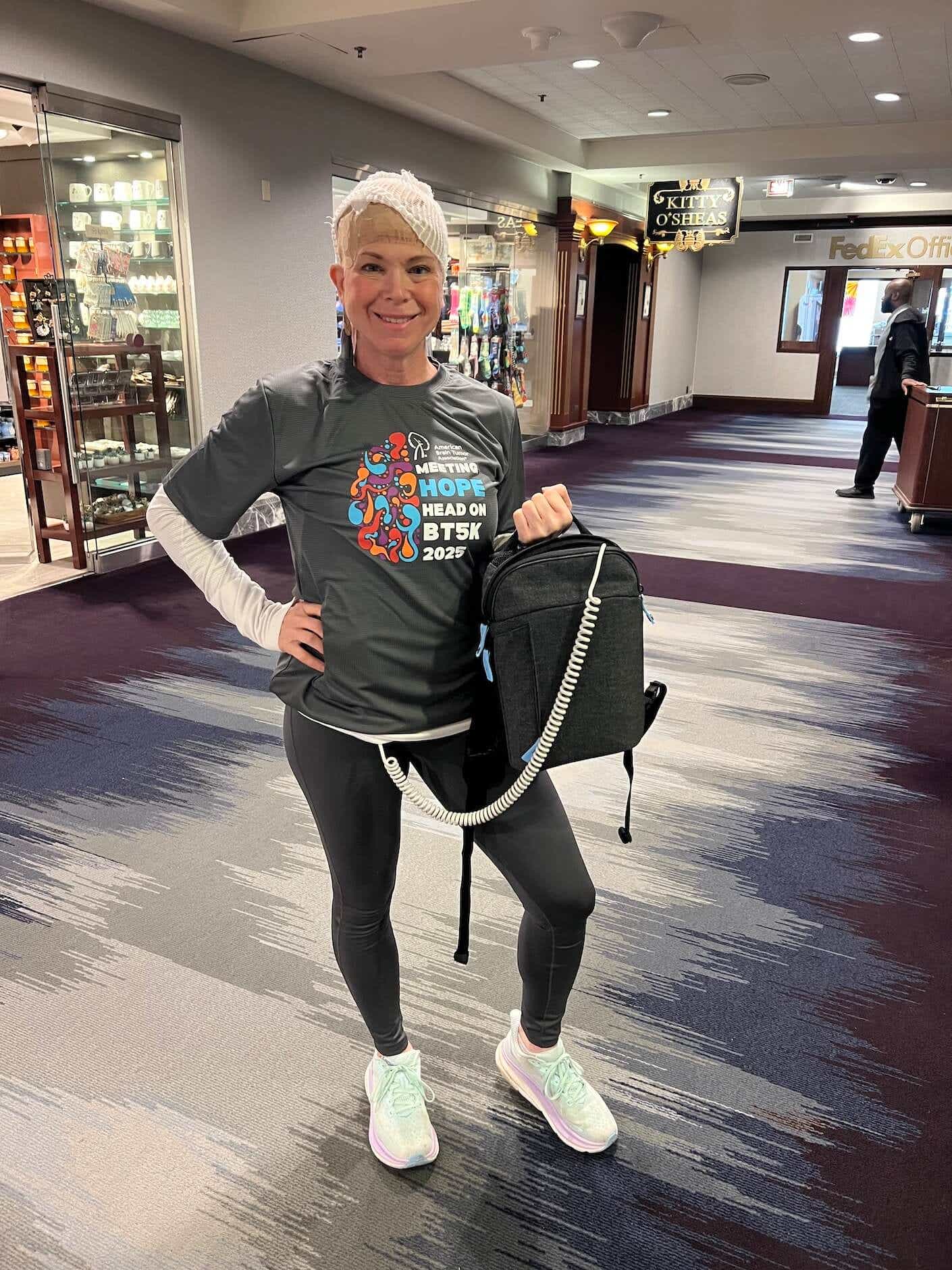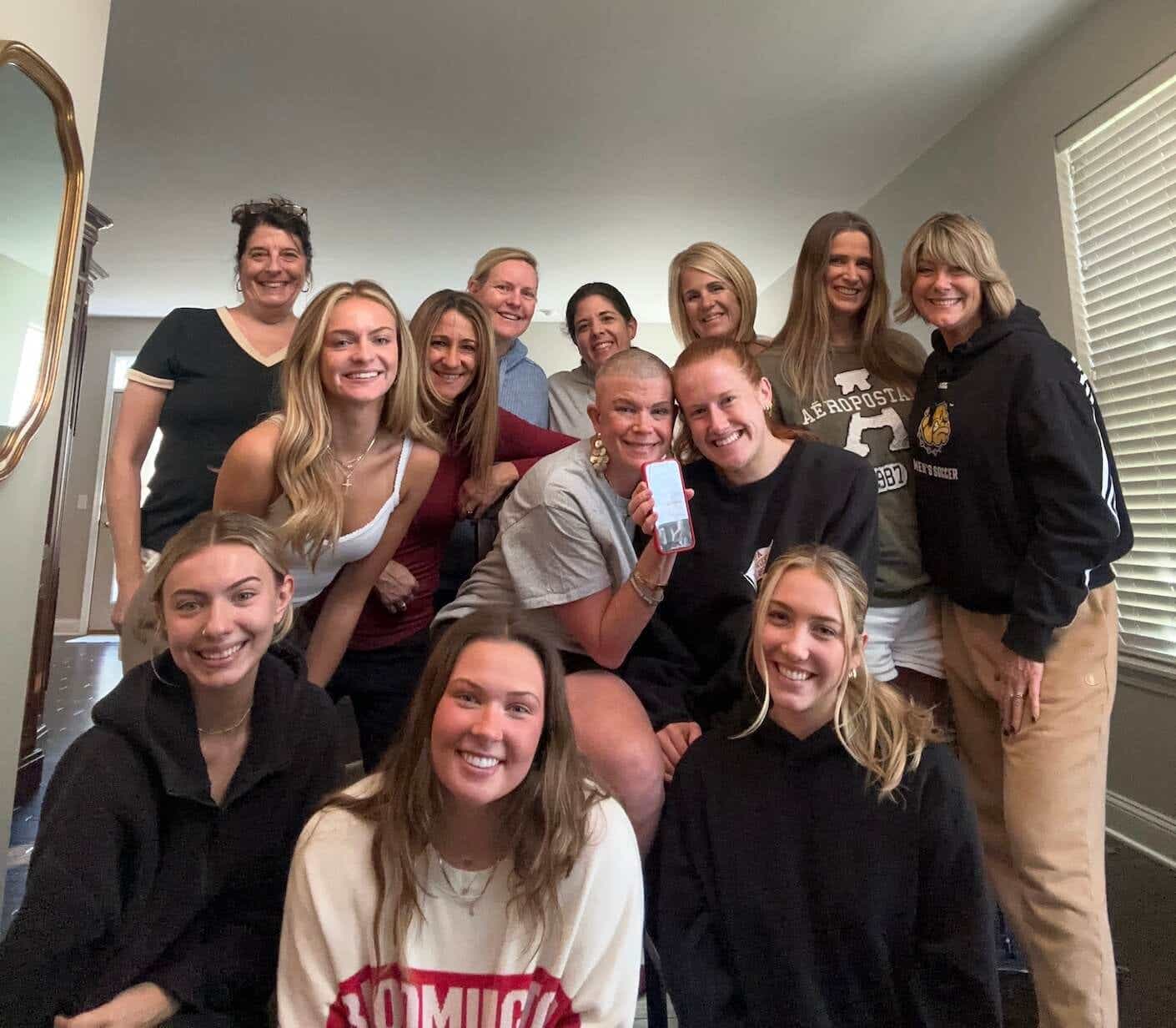I’m not someone who panics easily, but that doesn’t mean I don’t listen to my body. I’ve always believed in trusting my gut, but I never expected that belief would land me in the ER, where a CT scan revealed a walnut-sized tumor in the right frontal lobe of my brain. That’s exactly what happened 10 months ago.
It was a warm June day in 2024 when things started to feel off. I experienced heart palpitations at work — something I chalked up to indigestion or maybe anxiety. At home, I checked my heart rate on a smartwatch. It was normal, maybe with an extra beat, but nothing alarming. The next evening, the left side of my jaw felt numb and my left arm ached. I was scared. Could this be a heart attack?
I decided to go to urgent care — expecting a big bill for what might just be a panic attack. But, as always, I listened to my body.
The tests ruled out a heart attack. Still, something wasn’t right. Thankfully, the urgent care doctor recommended I go to the ER for stroke protocol, which included a CT scan. Taking that suggestion saved my life. The ER doctor found a 2 mm lesion on the right side of my brain. Within 24 hours, I had brain surgery. The neurosurgeon told me these tumors are usually discovered after a major seizure. Because I spoke up early, my tumor was found while it was still operable. I was diagnosed with grade 4 glioblastoma.

I wrote about this experience when it was fresh, almost a year ago, but 11 months later, I’ve learned a lot. First: Never ignore what your body is telling you. I was healthy, and because of that, I knew something was out of sync. We often talk ourselves out of seeking care. We tell ourselves we’re too busy, or being dramatic. But being “dramatic” about your health could save your life.
The support I’ve received has been extraordinary. My two best friends drove hours to hug me before surgery. They rallied my Gamma Phi Beta sorority sisters and friends, creating PMA (Positive Mental Attitude) swag — bracelets, T-shirts, cards, even a video to lift my spirits. My family didn’t focus on worst-case scenarios. They focused on fighting. They helped get me to appointments and keep my head in the game. My daughters gave me the will to fight.
I now believe that having support can truly impact how you face a diagnosis. The two-year survival rates of glioblastoma are sobering. I was scared and angry. But all the encouragement around me helped me focus on hope instead of doom-scrolling glioblastoma stories — trust me, it isn’t pretty.

I researched brain tumor organizations. I sought out encouragement in outliers — people living with this disease 5, 10, even 15 years later. They exist. They’re out there, and they’re thriving.
I’ve also been focused on joy. I’ve reconnected with friends from all stages of life. I’ve continued working full-time from home. I’ve let go of relationships that brought stress instead of strength (my marriage). My scans have been stable — something I’m deeply grateful for. I lost my 98-year-old grandmother in November, but I got to visit her, tell her I loved her, and share the good news that my post-radiation scan was stable.
One of the most profound changes has been in my faith. A nurse told me as I left the hospital, “Kathy, God has a plan for you through all of this.” That stayed with me. I think about how I got to the ER in time, how I got through surgery, and how I’ve endured treatment. It hasn’t been easy — some days it’s brutally hard — but I choose to live one day at a time. I wake up and say: I’m alive. I feel strong. I am loved.
Now I want to share that PMA with others. I want to be a strong advocate for glioblastoma patients — and for all brain tumor patients. There have been real breakthroughs, and we need to push for more. This Brain Tumor Awareness Month and beyond, I’m working to change glioblastoma from terminal to treatable, and from treatable to curable.









